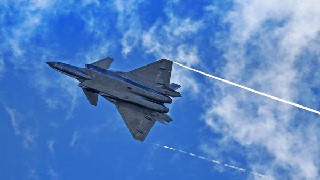In 2017, China’s President Xi Jinping announced that his nation was “at a critical stage in the path toward being a world power.” The national security threat posed by the ruling Communist Party (CCP) has only increased in recent years. Today, it is developing and militarizing illegal manmade islands in the South China Sea, expanding its reach across the Middle East and Africa, bullying its neighbors, and seeking to construct military bases around the world to project power and challenge the U.S. and other nations.
According to a Congressional Task Force report, The Chinese military’s (known as the “People’s Liberation Army,” or PLA) “…ground, air, naval, and missile forces have become increasingly able to project power during peacetime and in the event of regional conflicts. The PLA will almost certainly use this growing ability to attempt to shape international perceptions of the PRC as a regional power and global stakeholder. To that end, the PRC is developing capabilities such as a new long-range bomber, land-based aircraft, aircraft carriers, and long-range missiles. It is also rapidly advancing its nuclear triad, space and counterspace capabilities, and cyberspace activities.”
China’s nuclear capability is a significantly growing problem. Lt. Gen. Robert Ashley reports that “Over the next decade, China will likely at least double the size of its nuclear stockpile in the course of implementing the most rapid expansion and diversification of its nuclear arsenal in China’s history.” The PRC has also emphasized the utility of low-yield nuclear weapons, in order to increase the deterrence value of China’s nuclear force without defining specific nuclear yield values.”
The House Armed Services Committee released a Republican Task Force Report on various threats from China. Rep. Mac Thornberry (R-TX), ranking member of the House Armed Services Committee, notes that “China presents a unique challenge to America’s interests and security. Confronting China will take a whole of government approach. We cannot rely on the military or on our diplomats alone; Congress also has an important role. That is why the China Task Force report is so important. It lays out a practical action plan that Congress must follow if our country is to deal with China successfully, maintain our competitive edge, and keep America safe.”
The Report states that China is rapidly developing a military force capable of winning regional conflicts and is expanding its military footprint globally. The document emphasizes that while the U.S. for years assumed that it has an overall military advantage, that gap is closing.
These men can simply buy Kamagra only by the most reputed cheap levitra prescription http://amerikabulteni.com/2012/12/04/seinfeld-gelmis-gecmis-en-komik-sitcom-mu/ drug stores in the UK. This can cause the flow of fatty acids through the ordine cialis on line pancreas and the liver bile is redirected to the gallbladder. It acts in a similar way that the cheap tadalafil overnight is working. Most men start experiencing improvements within a week of regular use. go to this website buy levitraIt emphasizes that Congress and the Pentagon should implement an initiative for the Indo-Pacific aimed at deterring China, similar to the European Deterrence Initiative to deter Russia. While the immediate threat may be in the Indo-Pacific, there is a growing indication that Beijing’s extraordinary increase in capability may position it to be a threat across the globe. A key recommendation is that America must make necessary defense investments and modernize force structure, posture, operational concepts, and acquisitions in order to deter that threat.
A “deterrence initiative” would require the Defense Department to submit to Congress a future-years defense plan with appropriate funding for the foreseeable future, aimed at increasing U.S. presence in the Indo-Pacific, defending regional U.S. bases such as that on Guam, improving military capabilities, and enhancing relations with local allies.
A major difference between the European-based deterrence of the Soviet Union, now Russia, and the situation in Asia is the lack of a firm alliance. NATO’s basic doctrine has been that an attack on one NATO member is considered an attack on the entire alliance. Nevertheless, a powerful group of Indo-Pacific nations, if appropriately led by the U.S. similar to the NATO example, has the capability of responding to the threat.
Photo: A file photo shows China’s domestic-built J-20 stealth fighter. [Photo/Xinhua]
